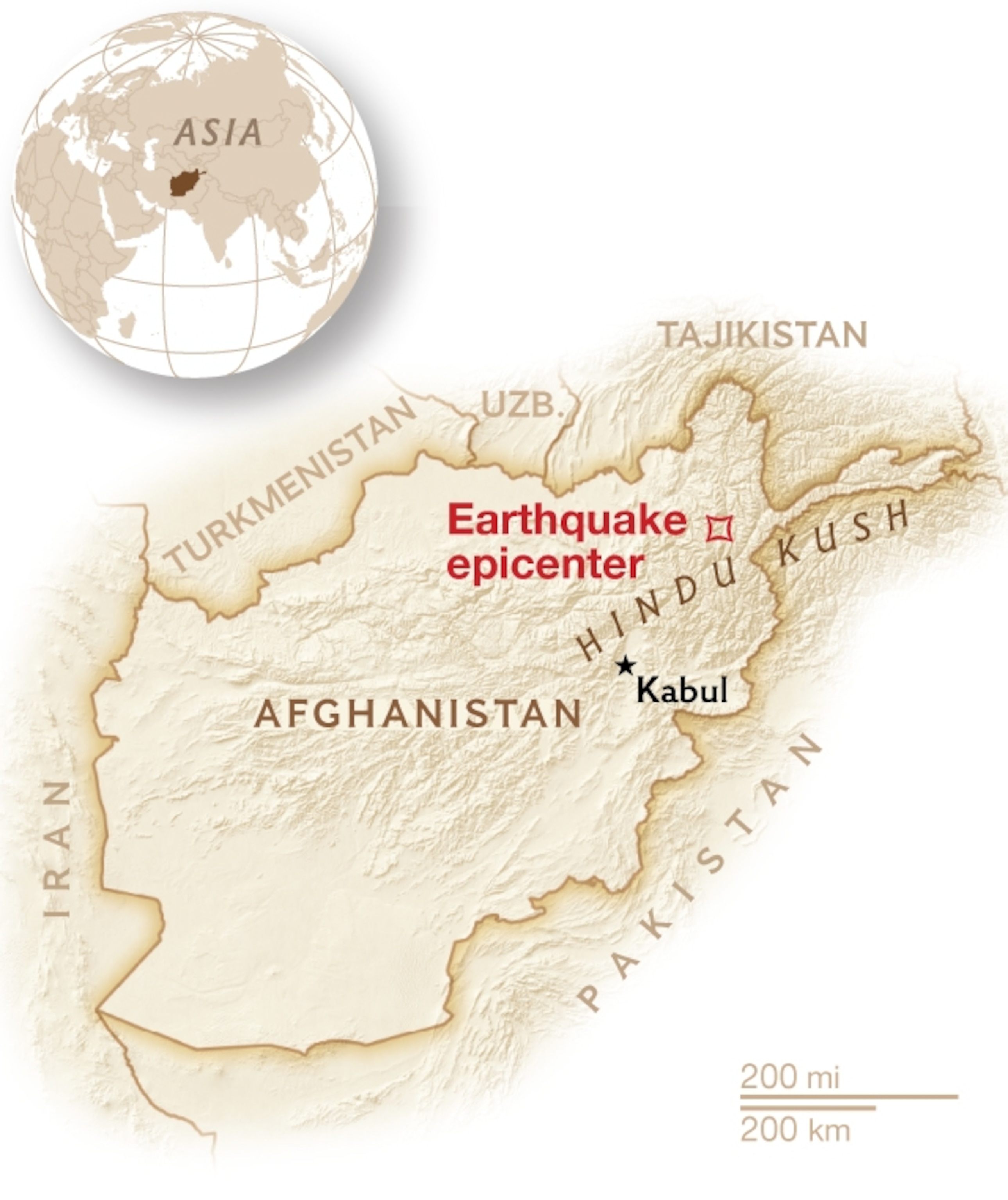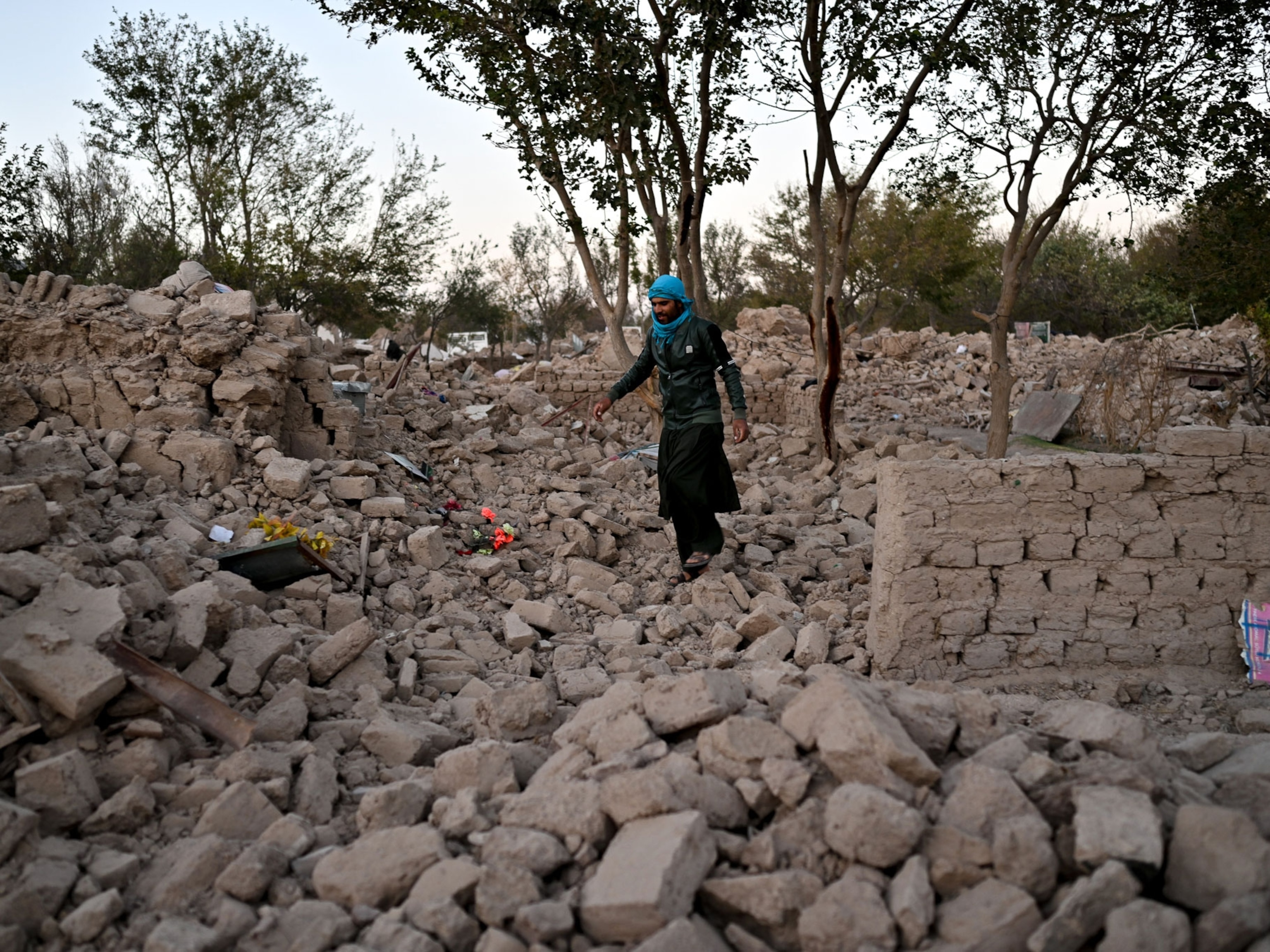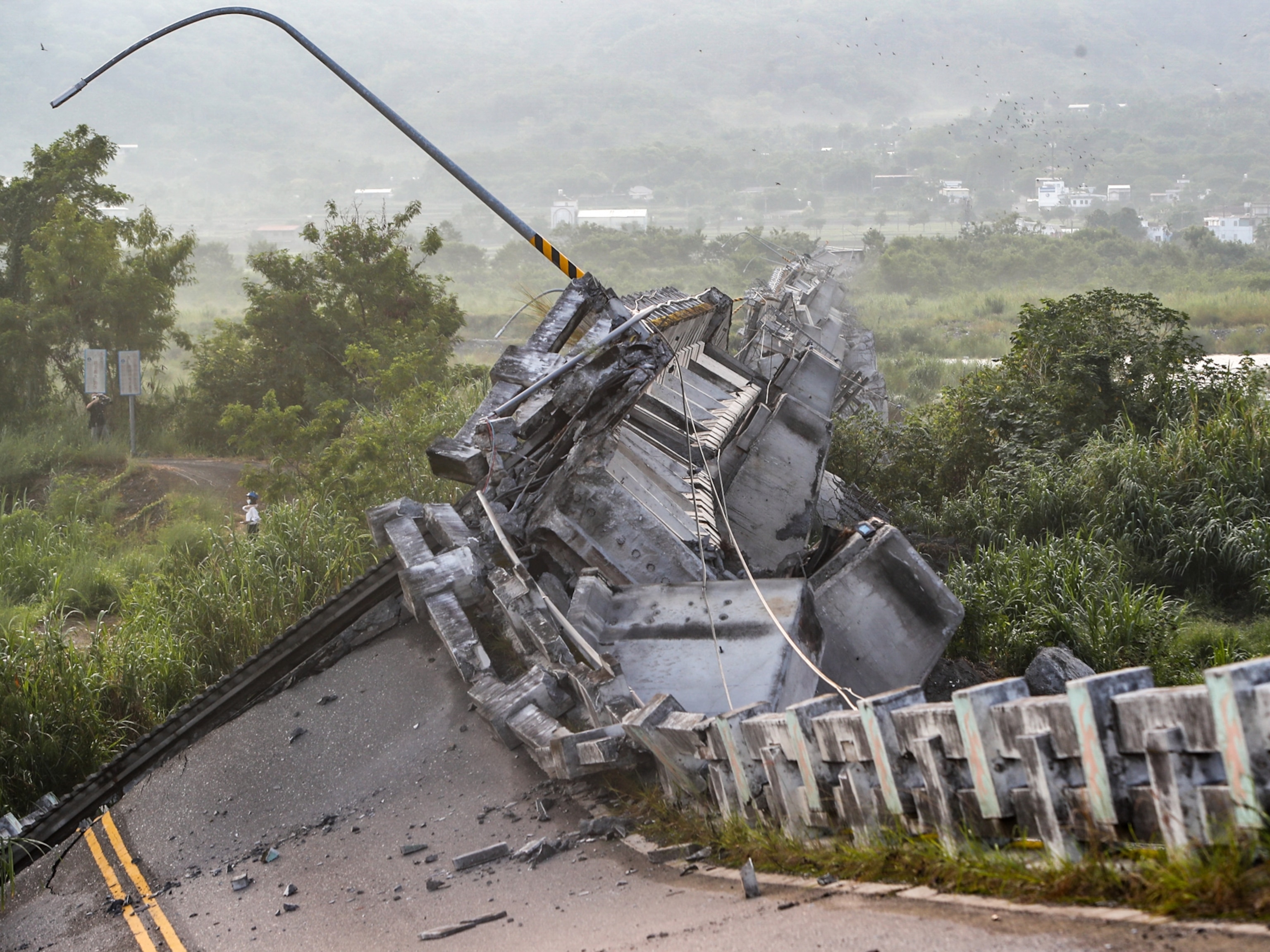
Cause of Afghan Quake Is a Deep Mystery
Scientists aren’t sure how earthquakes like Monday's form 130 miles underground.
The magnitude 7.5 earthquake that shook northeast Afghanistan and Pakistan on Monday was a type of quake not easily understood by scientists, even though it happened in what the U.S. Geological Survey (USGS) calls “one of the most seismically hazardous regions on Earth.”
The quake in the Hindu Kush mountain range triggered landslides, destroyed buildings, and killed more than 100 people, and rescue workers are still assessing the damage. About 16 earthquakes at least this strong strike around the world annually. In the last century, seven of them have happened within 155 miles (250 kilometers) of Monday’s earthquake.

But geologists don’t have detailed seismic monitoring from the Hindu Kush range because of its remoteness and proximity to conflict, making it difficult to understand the forces behind quakes there. “It’s a shame,” says Greg Beroza, a geophysicist at Stanford University. “We don’t have much data in that part of the world.”
Further complicating the matter, the USGS says the earthquake happened 130 miles (210 kilometers) underground, and deep quakes like this are a bit of a mystery to researchers.
Mystery of Deep Quakes
Most earthquakes are caused by tectonic plates rubbing together, but scientists aren’t sure what causes them at the depths of Monday’s quake. According to Beroza, lab experiments mimicking the pressures at such depths show that rock “should deform more like Silly Putty,” not break rapidly enough to generate seismic waves. These deep quakes are pretty common; nearly one out of every four earthquakes occur more than 31 miles (50 kilometers) below Earth’s surface.
Researchers suspect that rocks deep inside faults chemically rearrange themselves into denser forms to better bear tremendous pressure. In the process, the rocks may expel water, “which can act like a lubricant for the fault,” says Beroza, and eventually trigger an earthquake.
Deep earthquakes may also be caused by runaway friction. If a small area deep inside a fault moves, it generates heat, like rubbing your hands together. The hotter the area gets, the more it can move, and the more heat it creates. It’s a loop that could destabilize the entire fault, causing a quake.
The geology of the area surrounding Monday’s earthquake also points to another factor: unusually high stress in the rock. The Indian tectonic plate in the Hindu Kush region is not only colliding with and slipping under the Eurasian tectonic plate; it’s also contorted, pushed from the side into an S-shape like a ribbon candy. The added strain may improve the odds of water lubrication and runaway frictional heating. (Watch this video about how earthquakes form.)
The Hindu Kush shares this high-stress configuration with Bucaramanga, a seismically active area in Colombia. The two regions have some of the world’s highest rates of deep earthquakes.
How Do Earthquakes Form?
The Earth's crust is made of a jigsaw puzzle of continental and oceanic plates that are constantly ramming each other, sliding past each other, or pulling apart. Along the Ring of Fire girding the Pacific Ocean, for example, the seafloor plunges beneath Asia and the Americas, building mountains, feeding volcanoes, and triggering earthquakes.
Most earthquakes arise along such fault zones. The ground first bends and then snaps—an earthquake—to release energy along faults. Monday’s earthquake appears to have occurred along a reverse fault, driven by a slow-motion collision between the Indian subcontinent and the Eurasian tectonic plate.
The two massive plates are colliding at a rate of about 1.5 inches (37 millimeters) a year, pushing up the Himalaya mountain range in the process. But due to friction along the plate boundaries, the sliding is not smooth or even. In the fault, some of the rocks stick, causing pressure to build. When the rocks finally give way under the strain, the plates jerk rapidly, releasing the energy that causes an earthquake.
Brian Clark Howard and Dan Vergano contributed reporting.
Follow Michael Greshko on Twitter.





